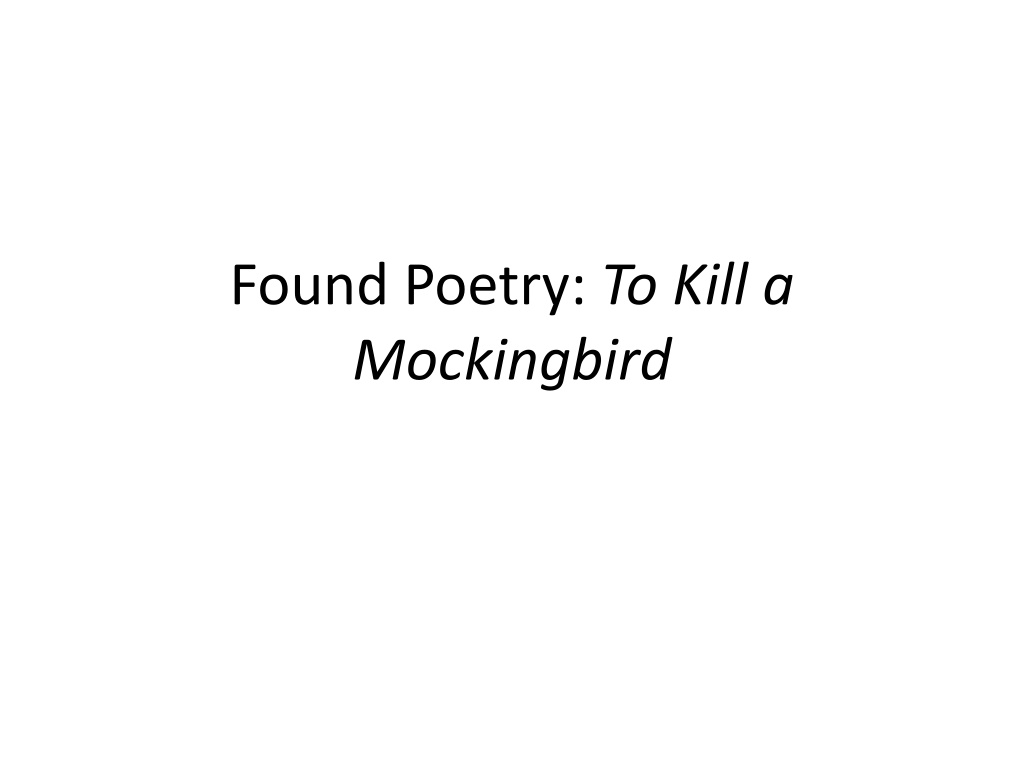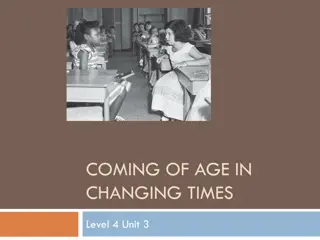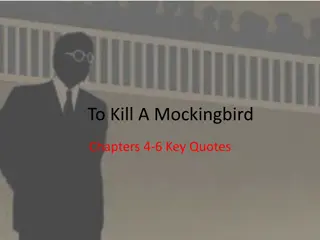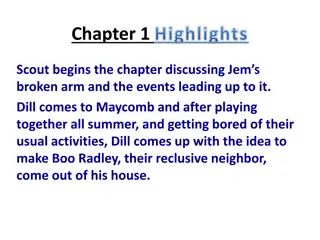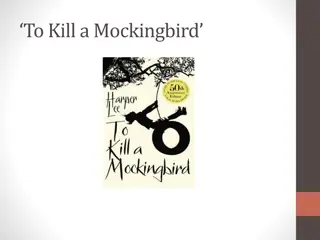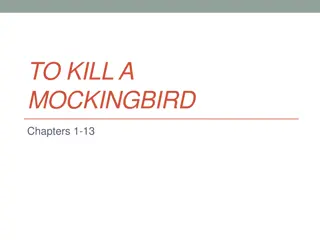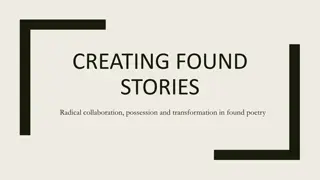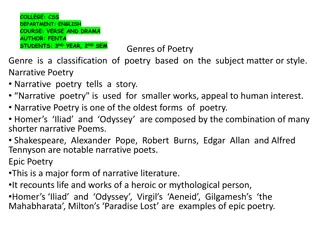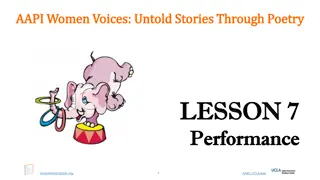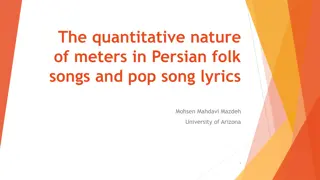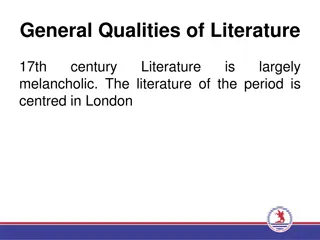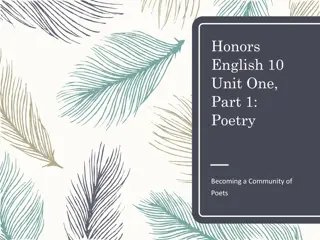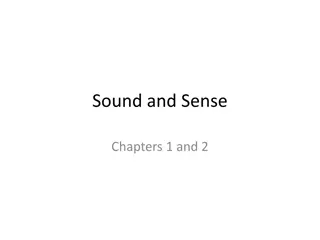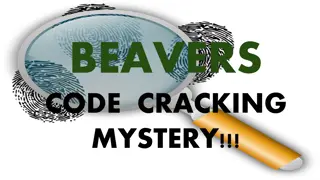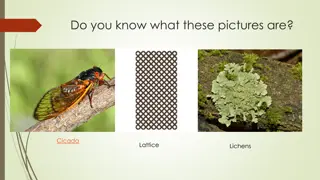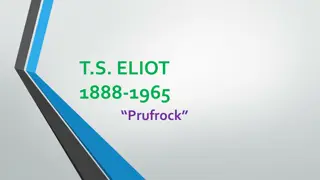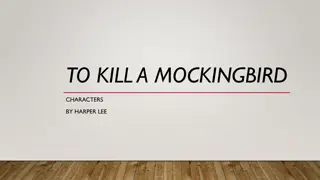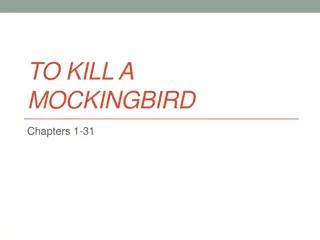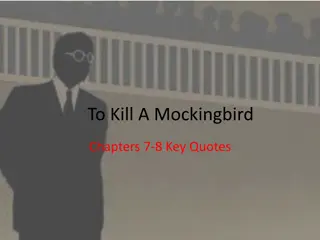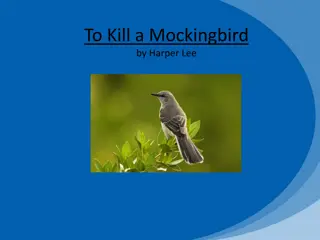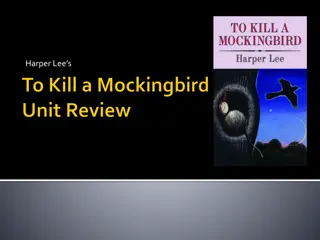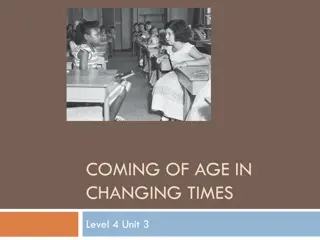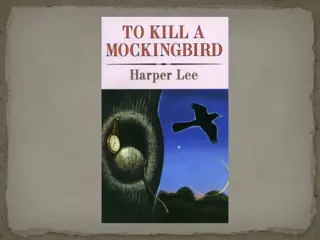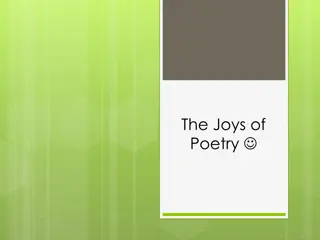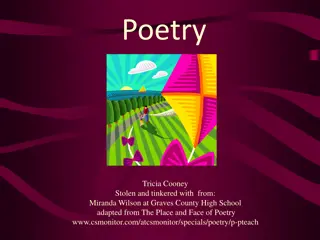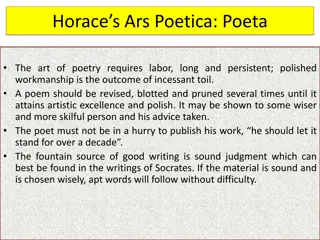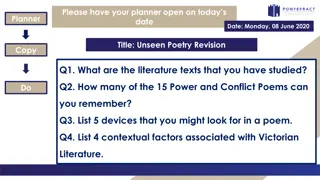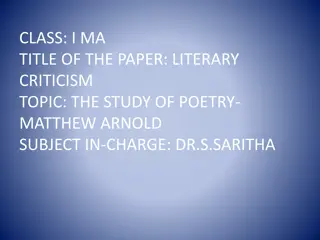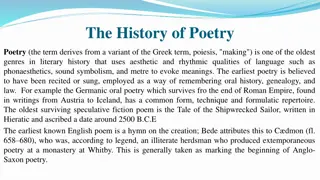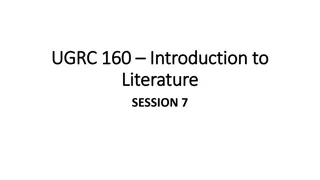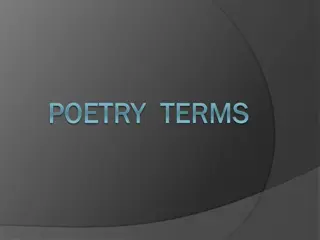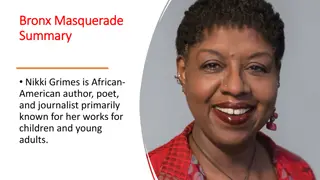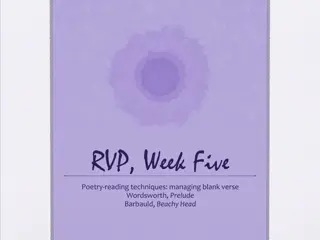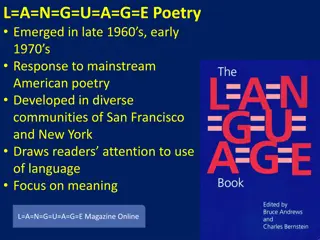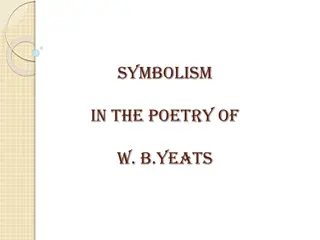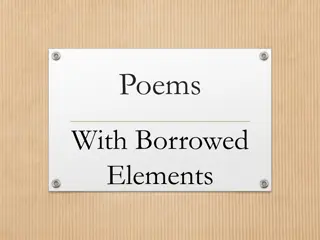Unveiling Boo Radley: A Found Poetry Exploration
Delve into the enigmatic character of Boo Radley from "To Kill a Mockingbird" through a creative found poetry exercise. Analyze Jem's vivid description, extract important details and phrases, and explore the art of conveying character and theme through poetry. Engage in a literary journey that dissects Boo's mysterious persona in a unique and insightful way.
Download Presentation

Please find below an Image/Link to download the presentation.
The content on the website is provided AS IS for your information and personal use only. It may not be sold, licensed, or shared on other websites without obtaining consent from the author. Download presentation by click this link. If you encounter any issues during the download, it is possible that the publisher has removed the file from their server.
E N D
Presentation Transcript
Found Poetry: To Kill a Mockingbird
Ongoing business/reminders New calendars New AOW Tomorrow: we will talk FINALS Thursday: back in the career center lab for final work day for Broken Stereotypes Friday: independent reading no TKAM, bring an independent choice book
What were doing! Writing poetry! Oh goodness Something else to share on Open Mic day #2 next week
Why were doing it! Believe it or not, and as discussed before, poetry s tighter form on the page makes you need to make decisions about how best to convey information about character and theme
Step One: Look at a sample A Reasonable Description of Boo Radley According to Jem Finch Rotten, yellow teeth, And popping eyes. Boo - Six-and-a-half feet tall, With bloodstained hands. Boo drools Most of the time. Blood that can not be washed off. If you want to get killed, Just go up to Boo s front door and knock. Boo- Dines on raw squirrels And cats. From To Kill a Mockingbird by Harper Lee, page 16 Boo - A long jagged scar across his face,
Sample: How did the poet accomplish this? Start with a favorite passage Create a list of details
Original Passage (from TKAM) Jem gave a reasonable description of Boo: Boo was about six-and-a-half feet tall, judging from his tracks; he dined on raw squirrels and any cats he could catch, that s why his hands were bloodstained if you ate an animal raw, you could never wash the blood off. There was a long jagged scar that ran across his face; what teeth he had were yellow and rotten; his eyes popped, and he drooled most of the time. Let s try to make him come out, said Dill. I d like to see what he looks like. Jem said if Dill wanted to get himself killed, all he had to do was go up and knock on the front door.
Important Details and Phrases List: Jem gave a reasonable description of Boo Six-and-a-half feet tall Dinned on raw squirrels and cats Hands were bloodstained You could never wash the blood off Long jagged scar across his face Teeth were yellow and rotten Eyes popped Drooled most of the time Let s try to make him come out, said Dill. I d like to see what he looks like If Dill wanted to get himself killed, go up and knock on the front door.
Your turn! 1. Select an important passage from chapters 20-22. A passage should be between 2-4 paragraphs. 2. Reread your passage once carefully.
In your journal 1. Reread the passage you have chosen again, and look for 50 100ish words that stand out in the passage. (The sample list on the direction sheet was ~60 words) 2. Write down details, words and phrases that you find particularly powerful, moving, or interesting. Pick strong words nouns and verbs. You can write articles (a, the) and conjunctions (FANBOYS), but don t count them towards your 50-100ish 3. Keep your list in the order that you found the details.
Finish your list + test it on your partner 1. Do a final general count (don t worry about a specific word count, just come close the sample on your direction sheet was ~60 words.) 2. If you re at 50-100ish words, share with your partner. Preface by telling them the general part of the book you pulled from, then share your list of words. 3. If you re not there, keep writing your list, then join in asap. You want to test your list on your partner before we go on to the next step.
Moving towards your poem. 1. One eye on the book, one eye on your list: Go back and read your passage again. Add other details or phrases that you notice as you go through the text again. 2. Get a focus: As you look over the shortened list, think about the tone that your selected words/phrases convey. The words should all relate to an important aspect, main idea, or theme of chapters 20-22. Or your poem could convey a bigger message about the entire novel or one particular character. 3. Slash and burn!!! Look back over your list and cut out everything that is dull, unnecessary, or that just doesn t seem right for a poem about this section. Try to cut your original list in half. (You now should have a list of about 25 50 important words/phrases.)
Lets write a poem! 1. Make any minor changes necessary to your list items as you create your poem. You can change punctuation and make little changes to the words to make them fit together (such as change the tenses, possessives, plurals, and capitalizations). 2. When you re close to an edited down version, if you absolutely need to add a word or two to make the poem flow more smoothly, make sense, or make a point, you may add up to three words of your own. That s three (3) and only three! 3. Read back over your edited draft one more time and make any deletions or minor changes. 4. Check the words and choose a title do not use Found Poem or To Kill a Mockingbird Poem as your title, but DO add inspired by To Kill a Mockingbird underneath your chosen title.
Tips on Arranging your Poem Read aloud as you arrange the words! Test the possible line breaks by pausing slightly. If it sounds good, it s probably right. Arrange the words so that they make a rhythm you like. You can space words out so alone or allruntogether. You can also put key words on lines by themselves. that they are all You can shape the entire poem so that it s wide or tall or shaped like an object. Poems do not have to rhyme, but if you decide that you want your poem to rhyme, use a consistent rhyme scheme. You can change minor things (verb tenses, point of view, plurals, punctuation) and you can add up to three words of your own Details can be out of order in your poem
1. Rewrite your (semi) final draft. Space or arrange the words so that they re poem-like. Pay attention to line breaks, layout, and other elements that will emphasize important words or significant ideas in the poem. 2. At the bottom of the poem, tell where the words in the poem came from. For example, From To Kill a Mockingbird by Harper Lee page 13. 3. Be ready to share with a small group and perhaps with our class, if chosen.
